In the dreary doldrums of Winter we need a bit of sunshine, enter the deep flavor of flat iron steak which works really well with the umami-rich soy sauce and sesame oil featured in Flat Iron Steak with Zucchini, Edamame, and Soba Noodles. Unfortunately our supermarket butcher told us they rarely carry flat iron steak, only if notified ahead of time. So, if you can’t find flat iron, substitute rib-eye like we did.
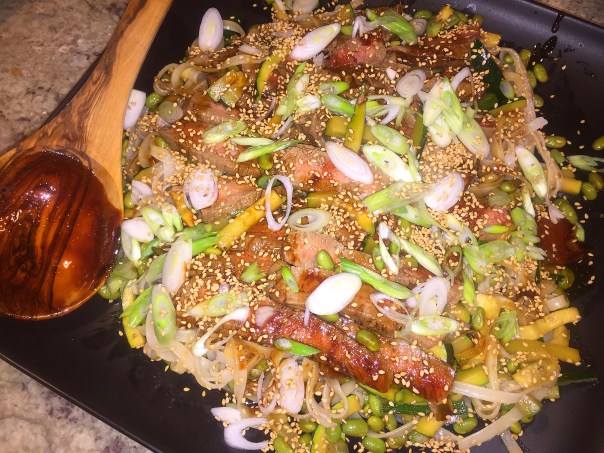
We had to make a few other alterations to the ingredients. The first was using rice noodles instead of soba noodles which contain wheat. The zucchini only came in large sizes so we just incorporated one, after all, it was just the two of us. Then, we opted for fresh edamame instead of frozen, but it was only an 8 ounce package, so next time I’ll make sure to add more because they not only taste good, they are rich in protein, dietary fiber, and micronutrients.
Finally, I cut back the amount of sugar from a 1/4 cup to just one tablespoon because the original amount just seemed like it would make a savory dish way too sweet. (And comments from reviewers verified that fact.) The recipe also calls for 3/4 cup of Mirin, an essential Japanese condiment similar to sake, but with a lower alcohol content and higher sugar content. The sugar content is a complex carbohydrate that forms naturally during the fermentation process (with no sugars added) but increases the sweetness of the dish.
As you know by now, we are way more into spicy and savory than sweet so when we make this again, we are going to add a couple of hot chiles during step two to add that spicy note and to counterbalance the sweetness.
As far as the meat, I was skeptical about poaching steak—who wouldn’t be? But by jove, it came out perfectly medium-rare after 12 minutes and was incredibly tender. Make sure you slice it thin and against the grain to preserve the suppleness.
Pickled ginger, scallions and toasted sesame seeds are all optional ingredients. I originally planned to incorporate all three of them to develop more layers of flavor, but had a senior moment and forgot the pickled ginger. However, Russ added the garlic cloves and ginger slices back into the sauce as he reduced it (Step 4) which we believe intensified the piquancy of the liquid.
Our reduced sauce thickened to a molasses-like consistency, so I can image if we had used the entire 1/4 cup of sugar, how thick it would have ended up! So based on your own penchant for sweet or spicy, you can adjust the aromatics, spices and sweetners to suit your own taste.
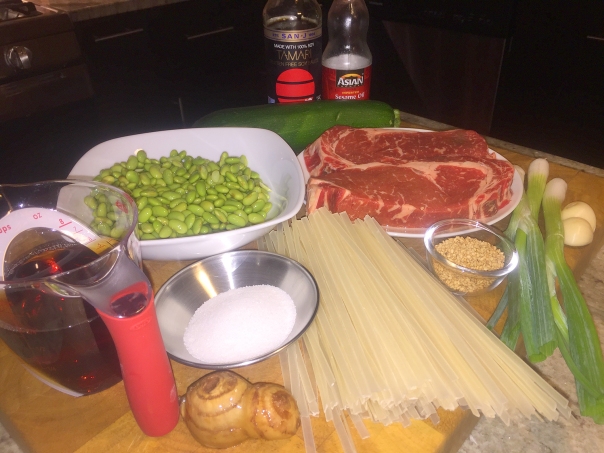

Two cloves of garlic are lightly smashed, ginger is sliced into three 1/4″ rounds, zuchinni is cut into match sticks, and the scallions are thinly sliced on the diagonal.
Ingredients
- Kosher salt
- 8 oz. dried soba noodles
- 1 Tbs. Asian sesame oil
- 3/4 cup soy sauce
- 3/4 cup mirin
- 1/4 cup granulated sugar (suggested you cut back to 1 Tbsp.)
- 3 1/4-inch-thick slices peeled fresh ginger
- 2 medium cloves garlic, peeled
- 2 flat iron steaks (8 to 10 oz. each)
- 1 lb. zucchini (2 medium), cut into 2-inch matchsticks
- 1 12-oz. bag frozen shelled edamame, thawed (about 2 cups)
- 1 Tbs. chopped pickled ginger (optional)
- 2 small scallions, white and light-green parts, thinly sliced (optional)
- 1 Tbs. toasted sesame seeds (optional)

The steak is added to a combination of soy sauce, mirin, sugar, ginger, garlic, and water in a 10-inch straight sided sauté pan.

After 6 minutes simmering, the steaks are flipped and simmered for another 6 minutes.

Once the steaks are removed from the cooking liquid, the zucchini and edamame are simmered for a couple of minutes.

The cooked veggies are added to the noodles which were combined with sesame oil and kept warm.

To intensify flavors, Russ put the garlic and ginger back into the liquid as it reduced, but took them back out when reached to the correct consistency.

Once everything else was ready, Russ sliced the steak into thin strips against the grain.

The sauce reduction is partially spooned over the platter, while the rest was served for passing at the table.

Finally, sliced scallions and toasted sesame seeds are tossed on top of the entire ensemble.
Directions
- Bring a large pot of well-salted water to a boil and cook the noodles until tender, about 4 minutes. Drain well, transfer to a large bowl, toss with the sesame oil, cover, and keep warm.
- Meanwhile, combine the soy sauce, mirin, sugar, ginger, garlic, and 1 cup water in a 10-inch straight sided sauté pan. Bring to a boil, and then add the steaks. Turn the heat down and simmer gently, flipping once, until medium rare (130°F), 12 to 16 minutes. Transfer the steaks to a cutting board, reserving the liquid in the pan. Discard the garlic and ginger.
- Return the liquid to a boil. Add the zucchini and edamame, return to a boil, and then lower to a simmer. Cook until the vegetables are just tender, about 2 minutes. Using a slotted spoon, transfer the vegetables to the bowl of noodles. Toss well, cover, and keep warm.
- Boil the cooking liquid until reduced by half, about 5 minutes.
- Thinly slice the steaks across the grain. Arrange the noodle mixture on a platter or divide it among 6 shallow bowls. Top with the beef and the pickled ginger, if using. Drizzle some of the sauce over the beef and garnish with the scallions and sesame seeds, if using. Serve, passing the rest of the sauce at the table.

After plating into individual bowls, more sauce is spooned on top.
Adapted from Lynne Curry of Fine Cooking



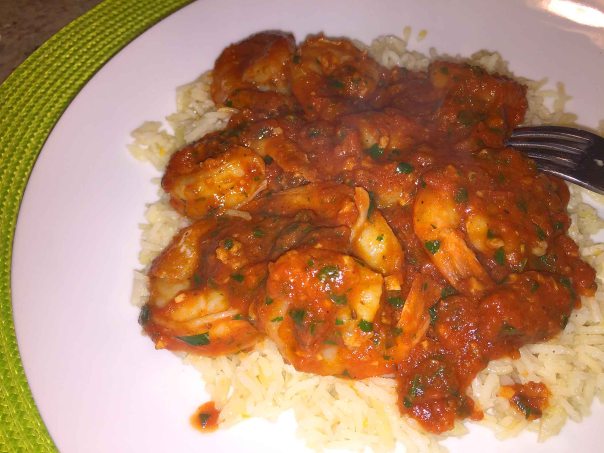
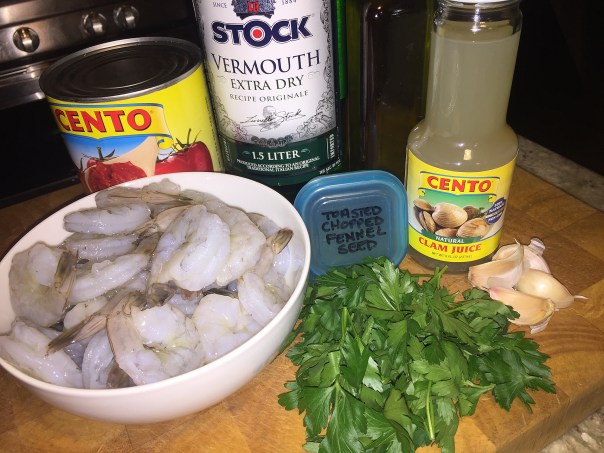
 Two large frozen cubes of shellfish stock were unthawed in the microwave and used in place of bottled clam juice.
Two large frozen cubes of shellfish stock were unthawed in the microwave and used in place of bottled clam juice.
 After the shrimp are transferred to a bowl, add the remaining oil and about two-thirds of the garlic and all of the fennel seeds and cook, stirring, until fragrant.
After the shrimp are transferred to a bowl, add the remaining oil and about two-thirds of the garlic and all of the fennel seeds and cook, stirring, until fragrant.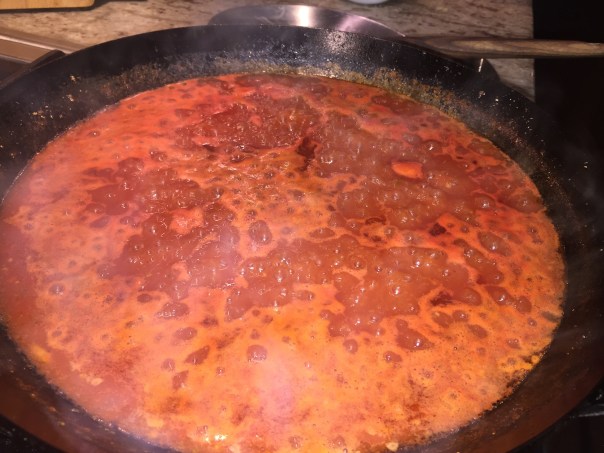


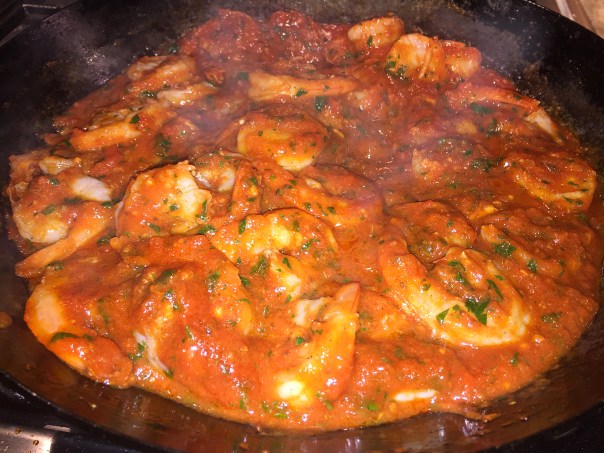
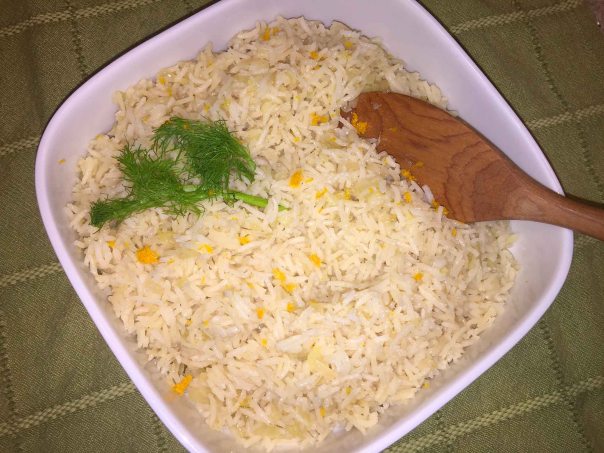













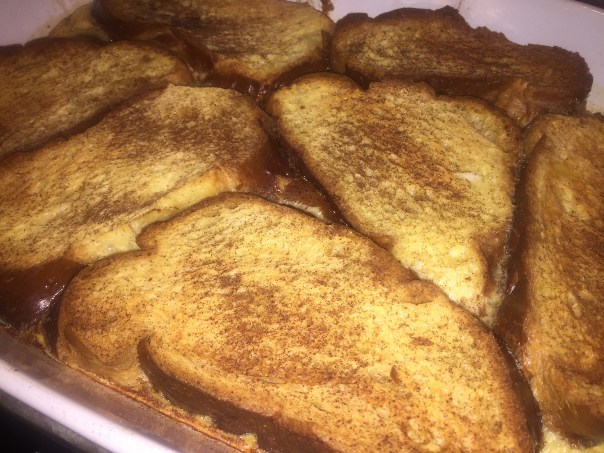


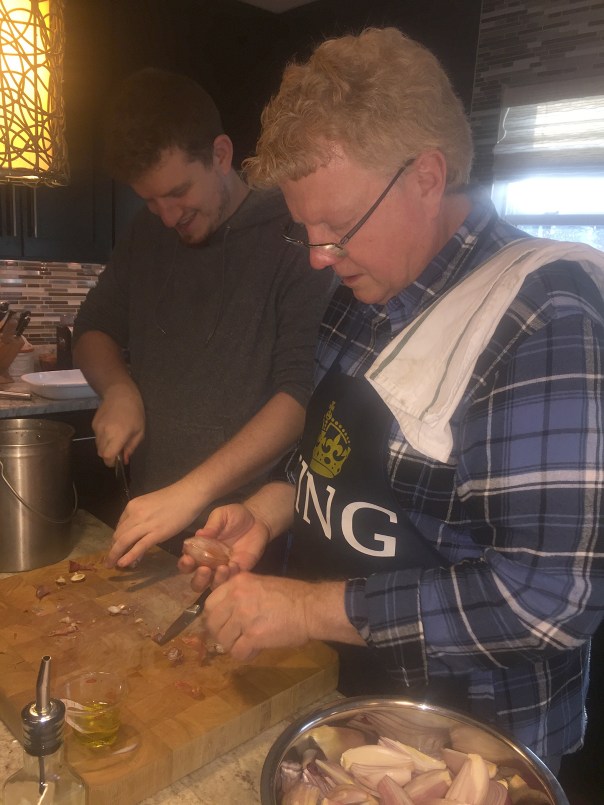
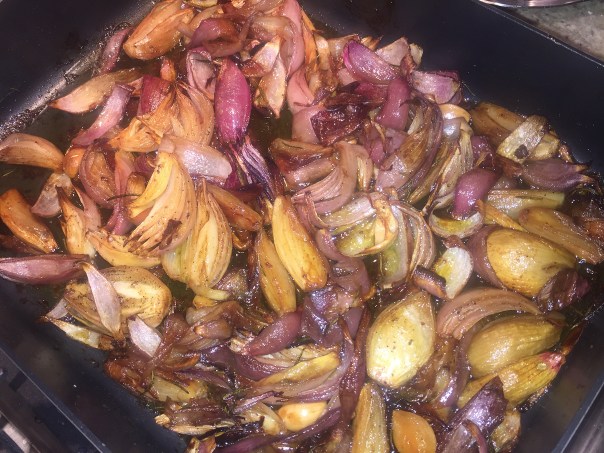
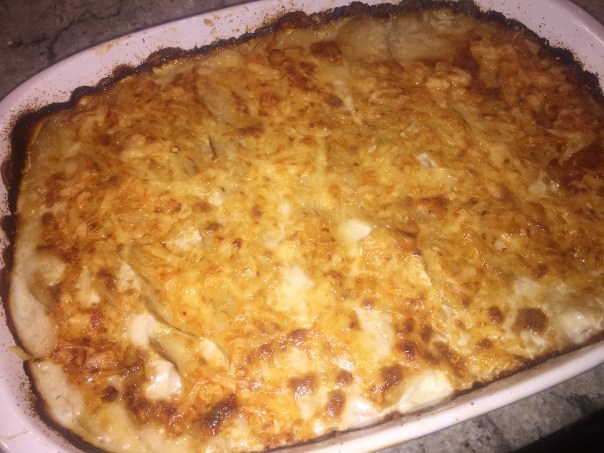
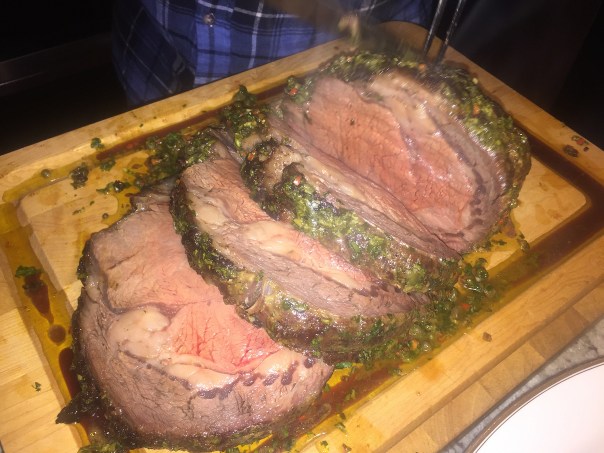

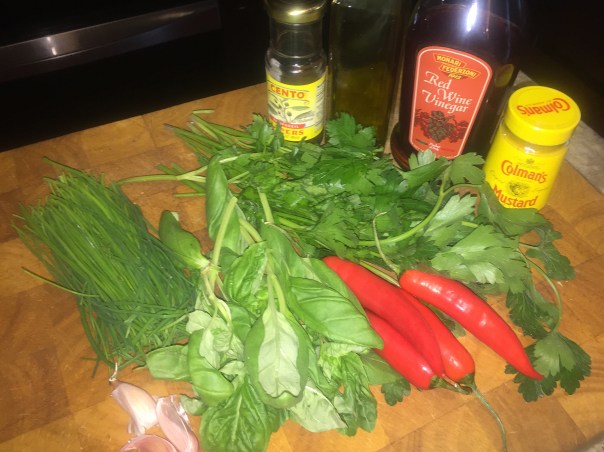
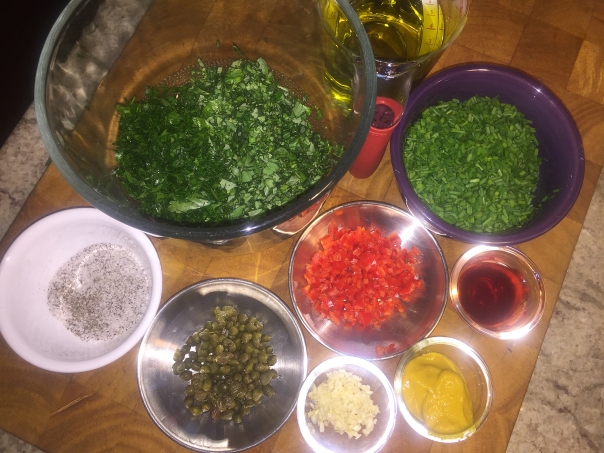 All of the herb dressing ingredients are prepped and measured.
All of the herb dressing ingredients are prepped and measured.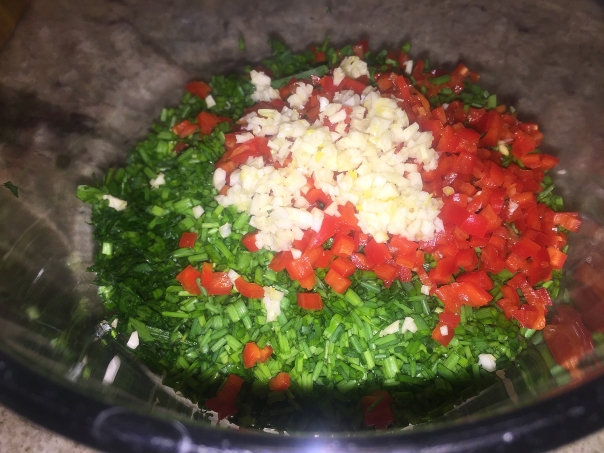

 The roast comes out of the frig after dry-aging uncovered for 24 hours.
The roast comes out of the frig after dry-aging uncovered for 24 hours. After roasting for 15 minutes at 425 degrees, baste the meat with the mustard sauce.
After roasting for 15 minutes at 425 degrees, baste the meat with the mustard sauce.
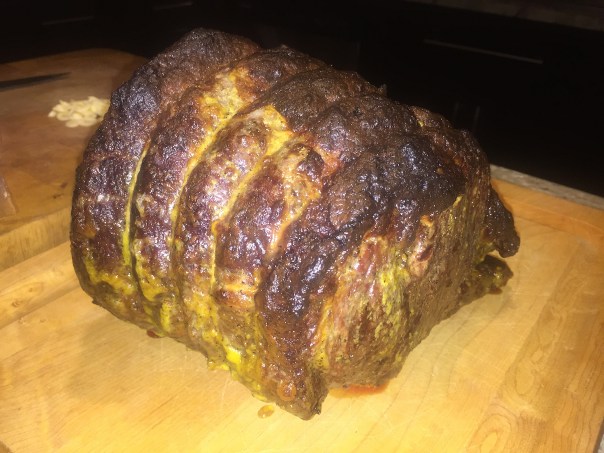 Once to temperature, let the roast rest for a half hour.
Once to temperature, let the roast rest for a half hour.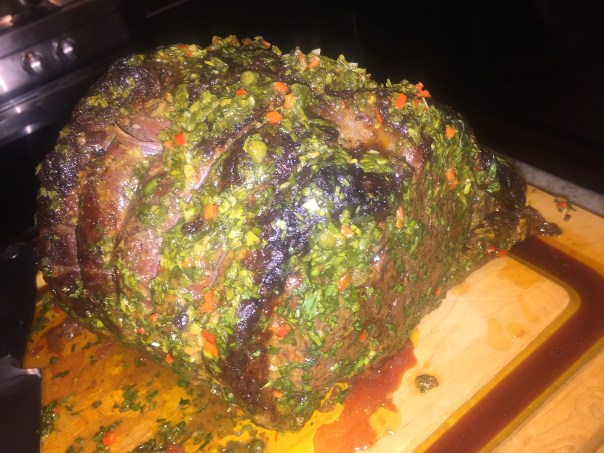



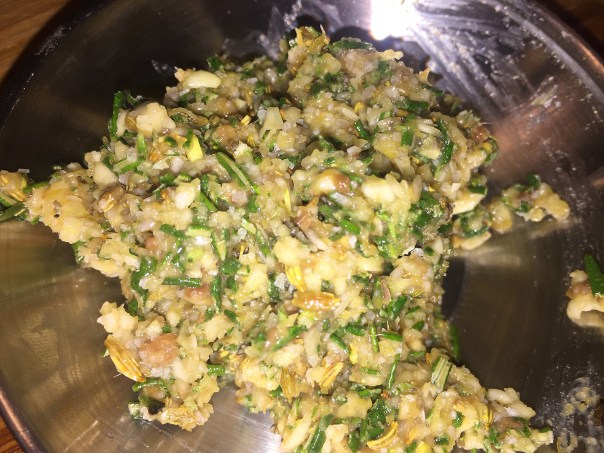








 Russ opted to have fries served wth his salmon.
Russ opted to have fries served wth his salmon.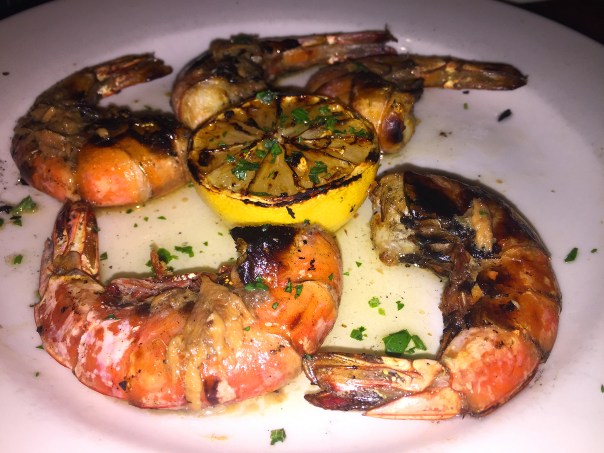

 Brad, Barb and Russ were kind enough to pose for a parting shot on the coldest night in 8 years!
Brad, Barb and Russ were kind enough to pose for a parting shot on the coldest night in 8 years!




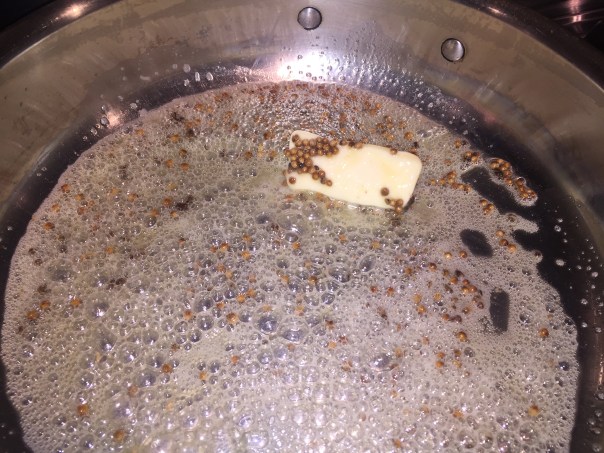 Melt the butter with the toasted seeds.
Melt the butter with the toasted seeds. After the butter melts, add the carrots and ginger; toss to coat. Stir in the carrot juice and honey and bring to a boil.
After the butter melts, add the carrots and ginger; toss to coat. Stir in the carrot juice and honey and bring to a boil.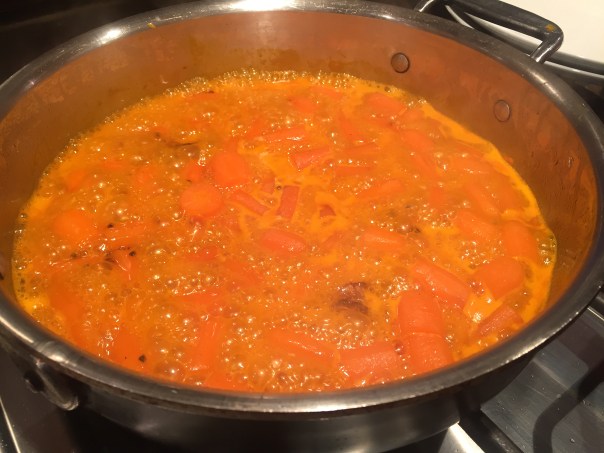





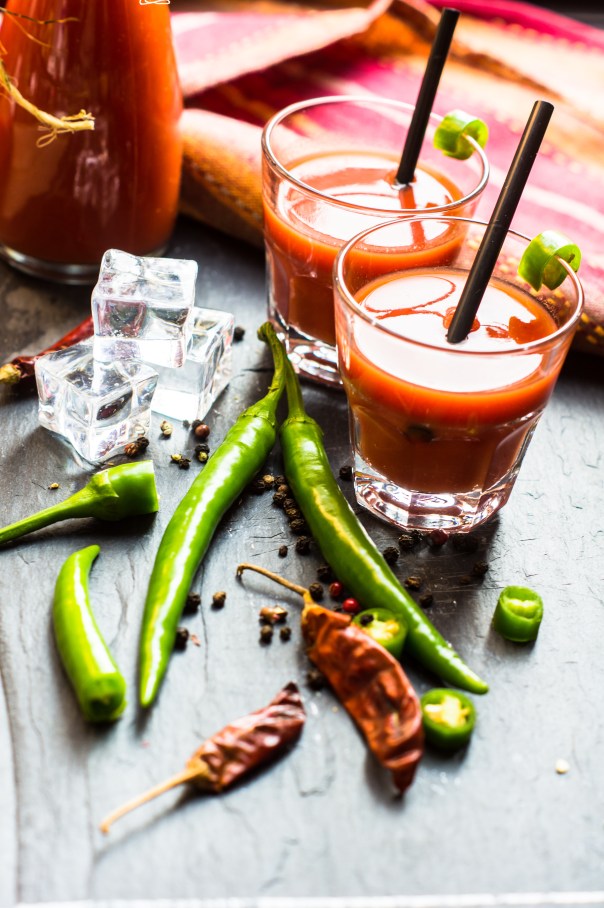


















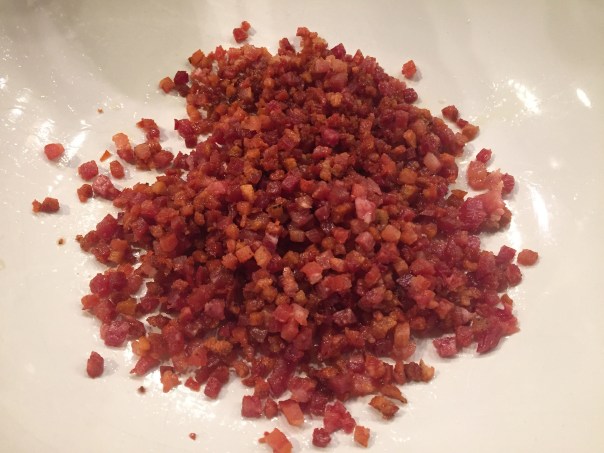


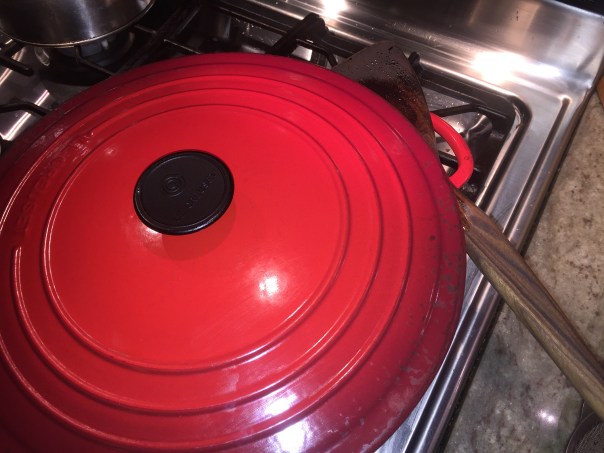






 Provisions are at the ready for cocktail hour.
Provisions are at the ready for cocktail hour.
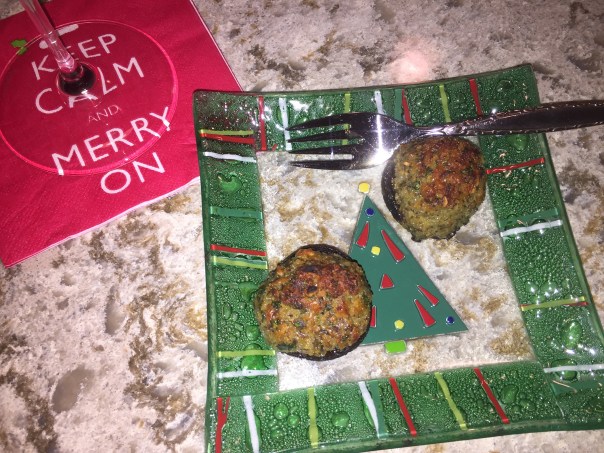
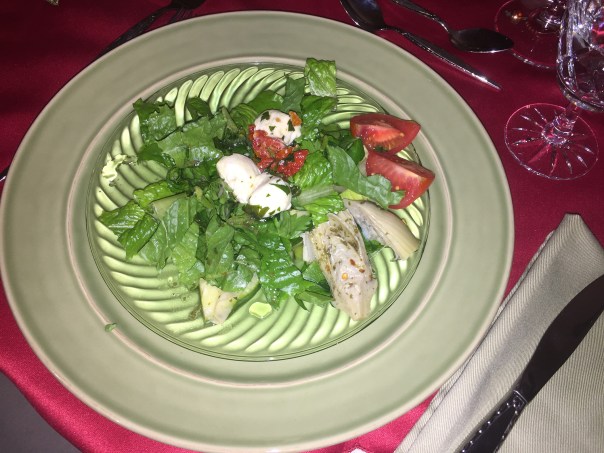





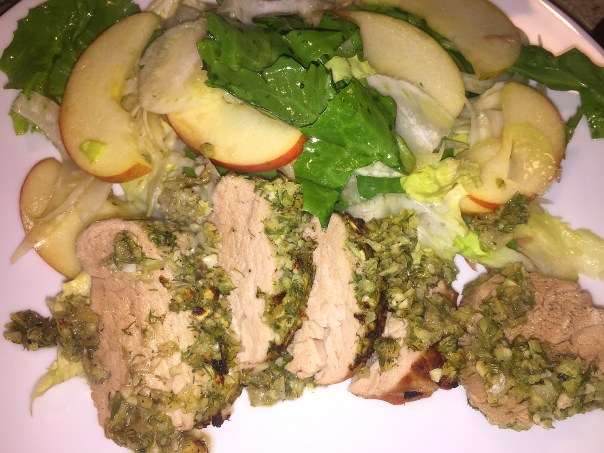


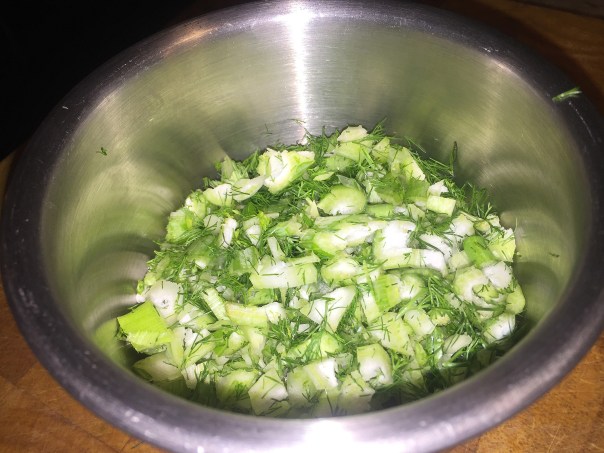









 Once the bacon has rendered down, some minced garlic is added to the skillet.
Once the bacon has rendered down, some minced garlic is added to the skillet. On high heat, the sliced kale is wilted for a few minutes.
On high heat, the sliced kale is wilted for a few minutes.
 Depending on the strength of your broiler, the salmon will take 10 minutes or longer to cook.
Depending on the strength of your broiler, the salmon will take 10 minutes or longer to cook.




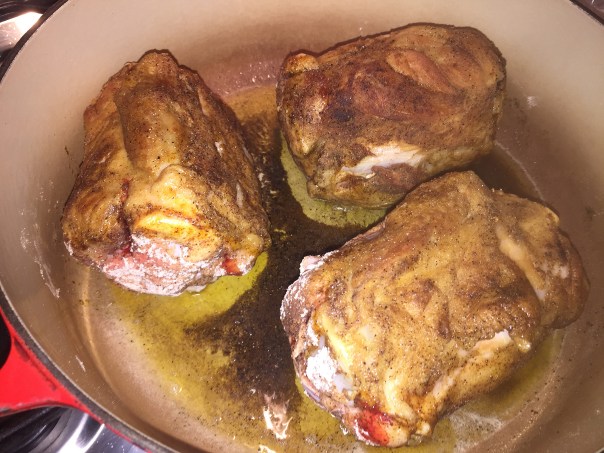


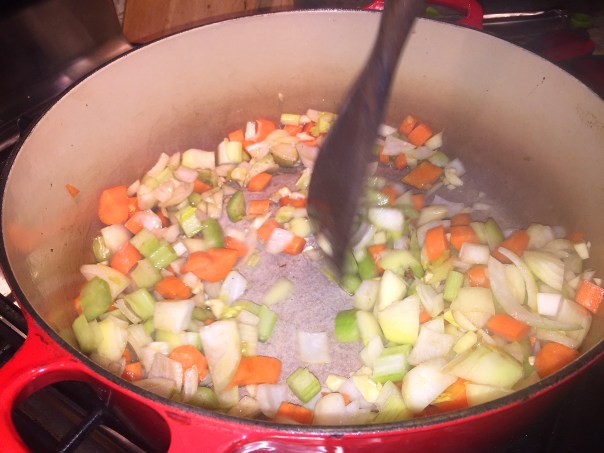




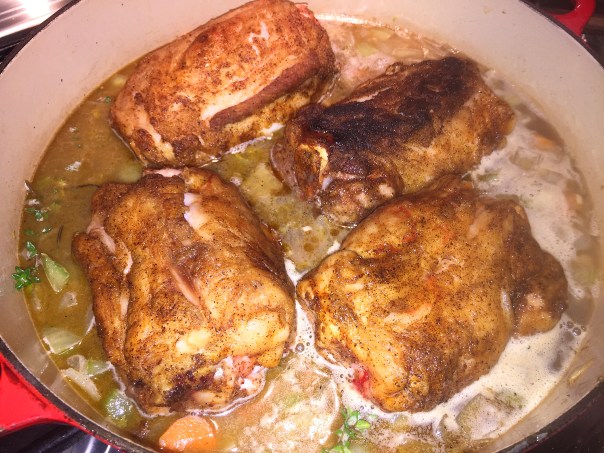



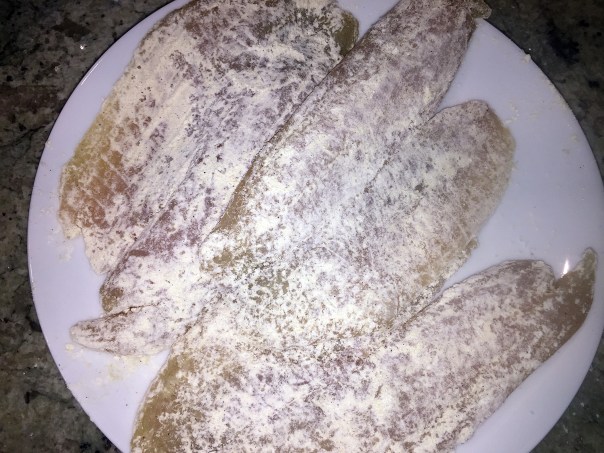
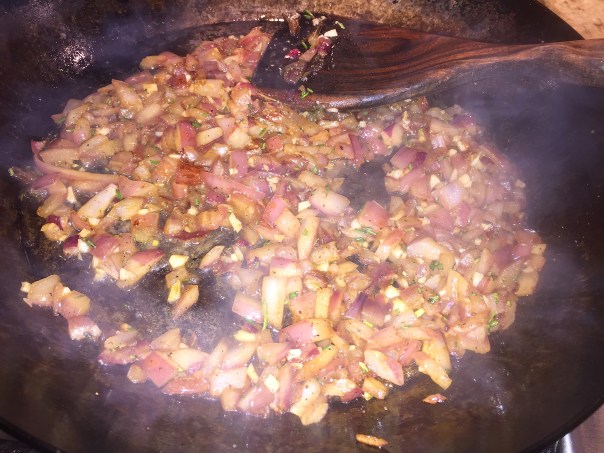 Rosemary and garlic are added to the softened onions.
Rosemary and garlic are added to the softened onions.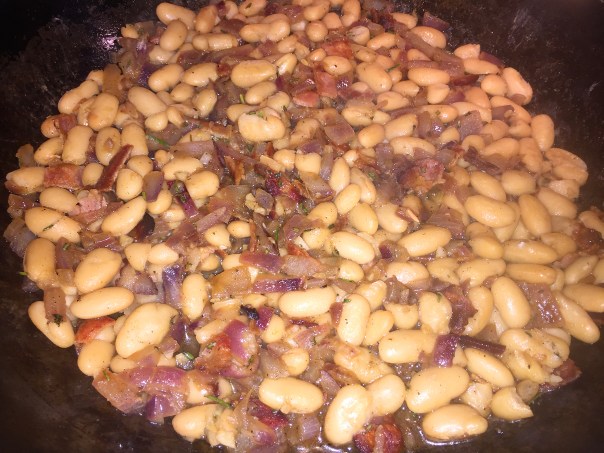 Next, the beans, broth, and bacon are cooked for 5 minutes to let the flavors meld.
Next, the beans, broth, and bacon are cooked for 5 minutes to let the flavors meld.

